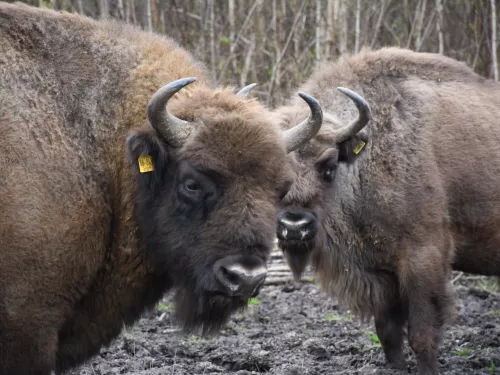
Ground-breaking wilding project reaches two-year milestone
Since 2022, the UK has sworn in four new prime ministers, the interest rate has risen from 0.25% to 5.25%, and, as of the 18th July, bison have been in the Blean for two whole years.
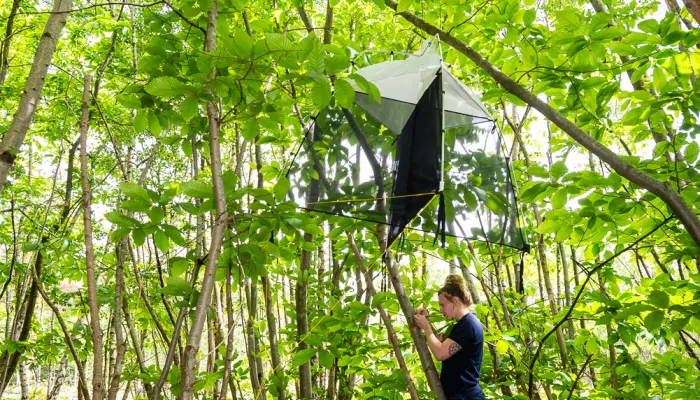
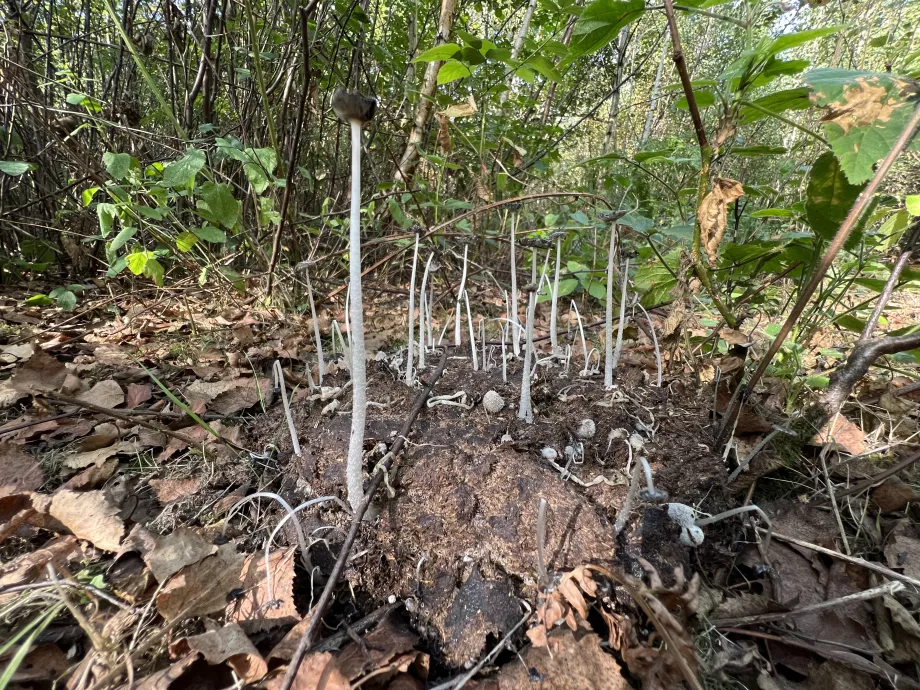
Before grazing animals were released into the Blean landscape the area was the subject of an extensive baseline monitoring programme so that scientists could understand what changes happened after the bison, ponies, pigs and cattle arrived and this unearthed some interesting finds.
Some rare birds were recorded in the Blean including the lesser redpoll, spotted flycatcher, nightingales and lesser spotted woodpecker.
Where invertebrates were concerned the woodland recorded 178 species of spider which could make the Blean one of the most significant woodland spider assemblages in the UK. This included recordings of the critically rare Pistius truncates and Walckenaeria mitrata, a genus of dwarf spider which, before this survey, had not been recorded in the UK since 2004. The survey also unearthed a single sample of Dissoleucas niverirostris, a rare fungus beetle which had not been seen in the UK since 1988. Despite being an incredibly rare butterfly, the heath fritillary is recorded in the woodland in good numbers.
Since monitoring began, there have been some interesting discoveries like a recorded sighting of Lagria atripes, a UK beetle that had previously been declared extinct. Since the initial find, volunteers have found several more examples of the beetle in the woodland. Clearly the discovery cannot be attributed to the bison, but it does showcase the importance of monitoring habitats and this in turn helps us to gain a deeper understanding of what species still exist.
Elsewhere volunteers inspecting the presence of dormice, slow worms and Viviparous lizards did see an increase in numbers. However, during the webinar ecologist Kora Ross explained that this does not mean there has been an actual increase in this timeframe as there are many factors, such as the dormice adjusting to the monitoring boxes, that could contribute to this change. Furthermore, whilst slow worm and lizard counts increased, there were declines in other reptile populations. 36 slow worms were found in in 2021 and 58 in 2023, six Viviparous lizards were counted in 2021 and seven in 2023 and grass snake counts rose from one to four.
It is important to note that the monitoring programme at West Blean and Thorden Woods is a long-term project, the returns of which will be unlikely to show anything conclusive or significant for at least five years and is set to continue until the year 2050! Therefore, a singular year of data, whilst interesting, cannot provide an indication of programme performance at this stage.
Kent Wildlife Trust’s Ecological Evidence and Academic Partnerships Lead, Kora Ross explains: “With all the excitement that followed the bison release, it is only natural people want to now know how the herd are impacting the woodland, but we are far from being able to evidence that scientifically.
“We have seen the visible initial impacts they have had in trampling rhododendron, opening up paths through the woodland, dung beetle larvae appearing in their dung and fungi growing from it, but we need years more research to establish patterns in biodiversity that we can attribute to the bison.
“Over the next few years, the bison will have bridges installed to full access to 200 hectares of woodland, rather than the 50 they are currently roaming, and the grazing animals will be placed in with them and then we can start building a picture of how the woodland is adapting to these giant herbivores grazing, dustbathing and dispersing seeds around it.”
Bison Ranger Donovan Wright, of Wildwood Trust said: Since the bisons’ arrival, in my opinion, there has been a renewed energy in the woods. From what I can see, the impact they are having is both remarkable and rejuvenating.
“It is wonderful to see how complex, intricate and interconnected nature is. My first impression is that, the bisons’ presence and their unique impact is having a cascading effect through the ecosystem and nature is slowly healing. And the best part is it’s not through hands on management, but by letting go and allowing the bison to be bison. I cannot wait to see what the ecologists learn when fuller findings are published in a few years.
If you would like to be part of this ground-breaking monitoring programme, you can volunteer. The team are currently looking to recruit a butterfly transect volunteer to help survey the butterfly population in the woodland and regularly recruit volunteers to support the monitoring and engagement elements of the programme.
Wilder Blean is a pioneering conservation project in partnership with Wildwood Trust using European bison as eco-system engineers.
The bison aim to create a more climate resilient landscape within West Blean and Thornden Woods, near Canterbury, Kent, and their natural behaviours will help restore dynamic and complex habitats.
By creating layers within the forest and naturally felling trees, the woodland will move away from being a monoculture, and wetter areas will not only store carbon, but reduce flood risk.
This is the first time in thousands of years that wild bison have roamed in UK woodlands as part of a landmark experiment to test this nature-based solution to habitat management as well as combatting the climate and nature crises.

Since 2022, the UK has sworn in four new prime ministers, the interest rate has risen from 0.25% to 5.25%, and, as of the 18th July, bison have been in the Blean for two whole years.
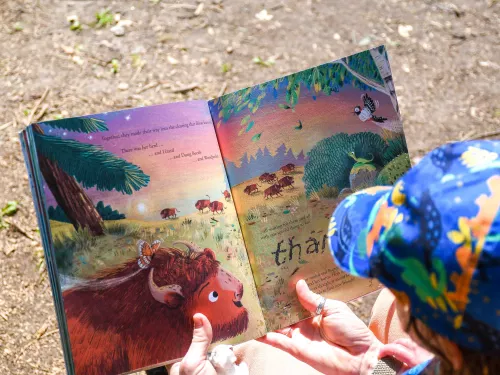
A children’s book inspired by the Wilder Blean Project, an initiative that involves free-roaming bison acting as ecosystem engineers in Canterbury, Kent will launch on Thursday 4th July 2024.
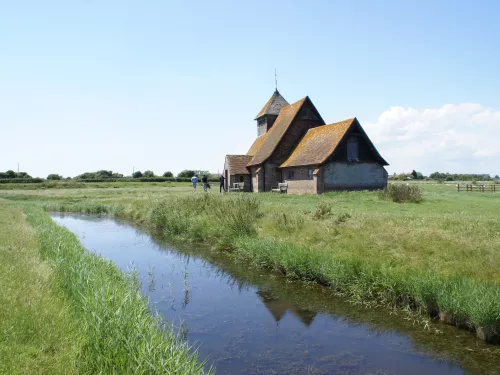
Thanks to National Lottery players, grants totalling more than £3.65m for three projects across Kent will reconnect people with their natural heritage and protect it for future generations.